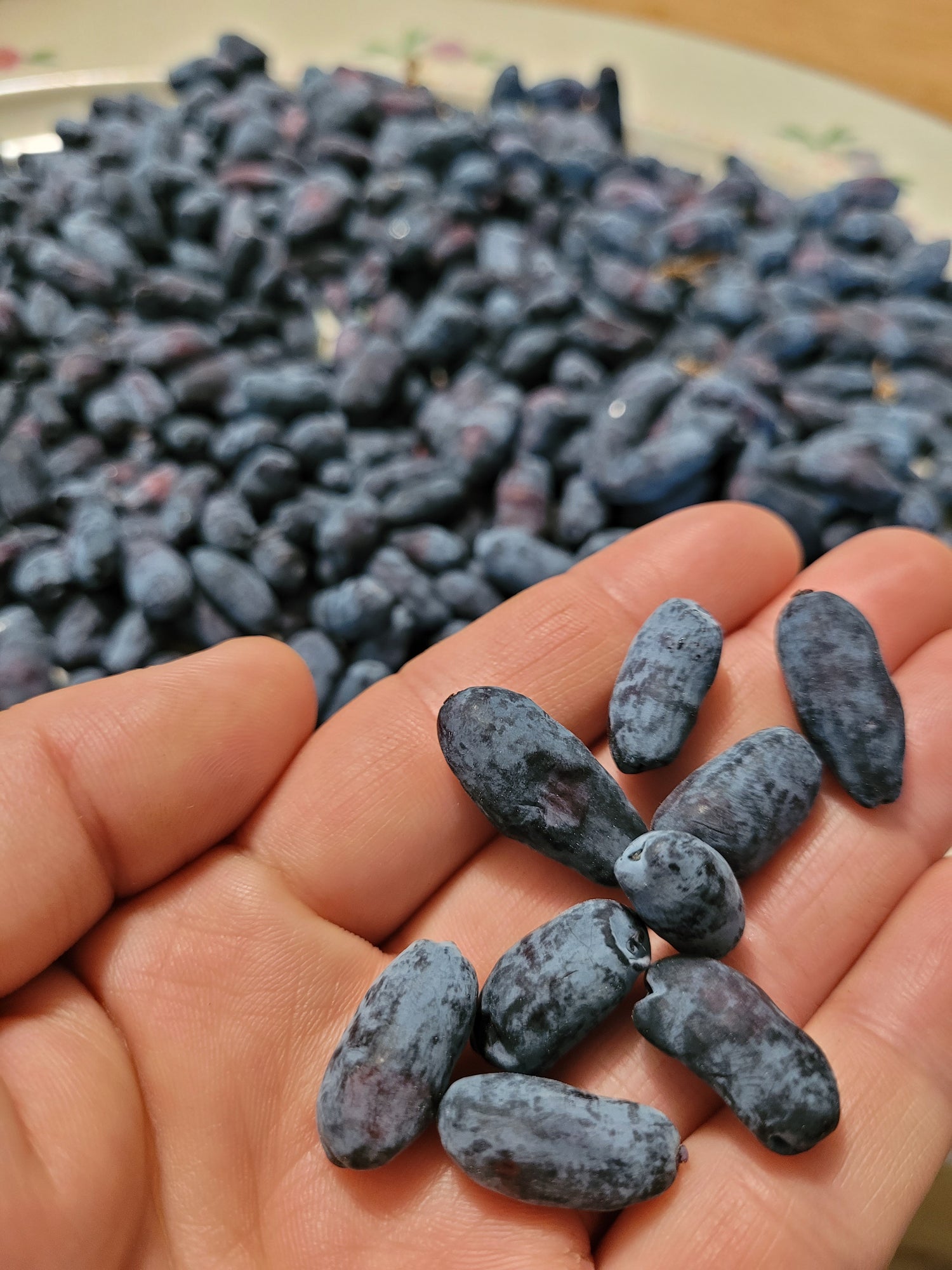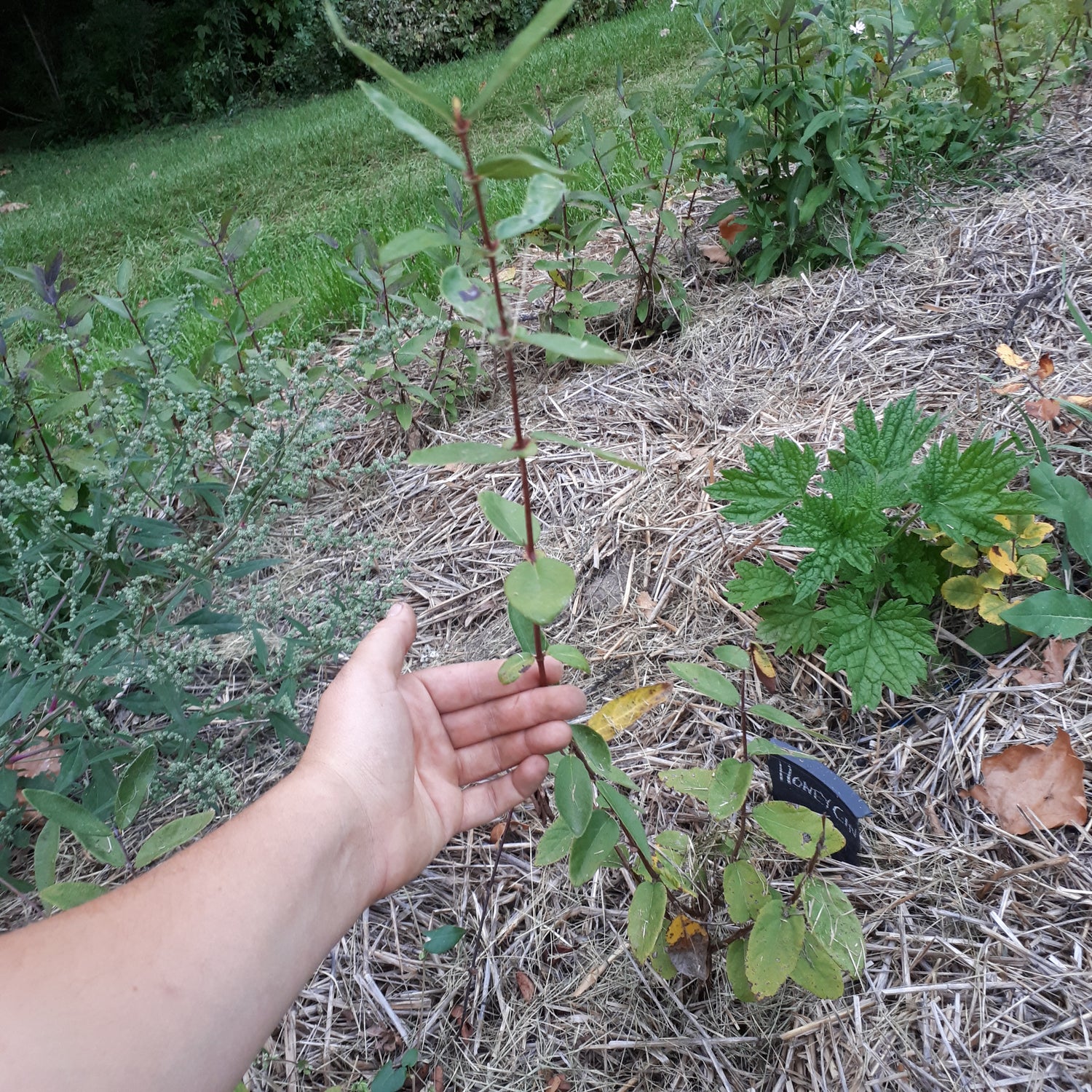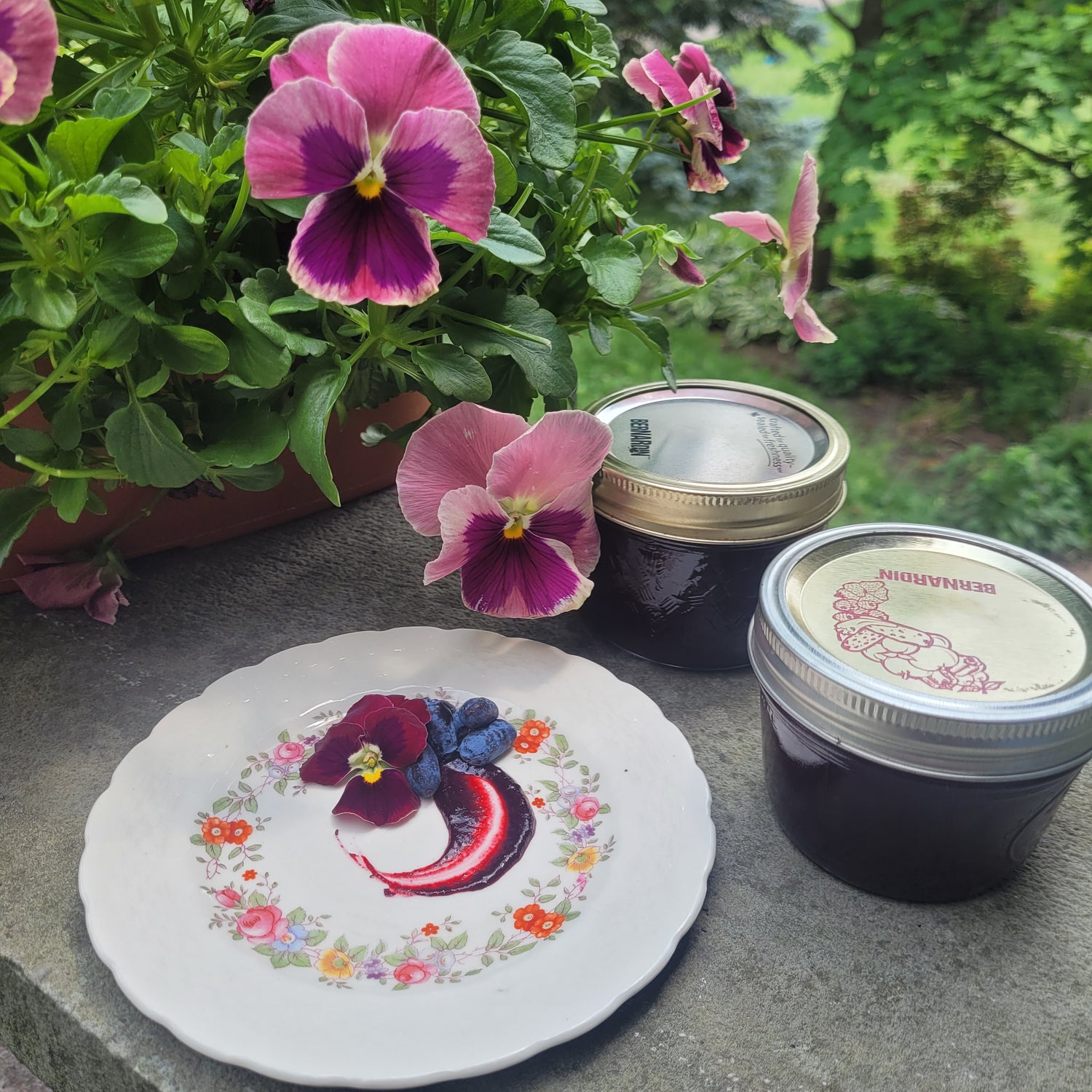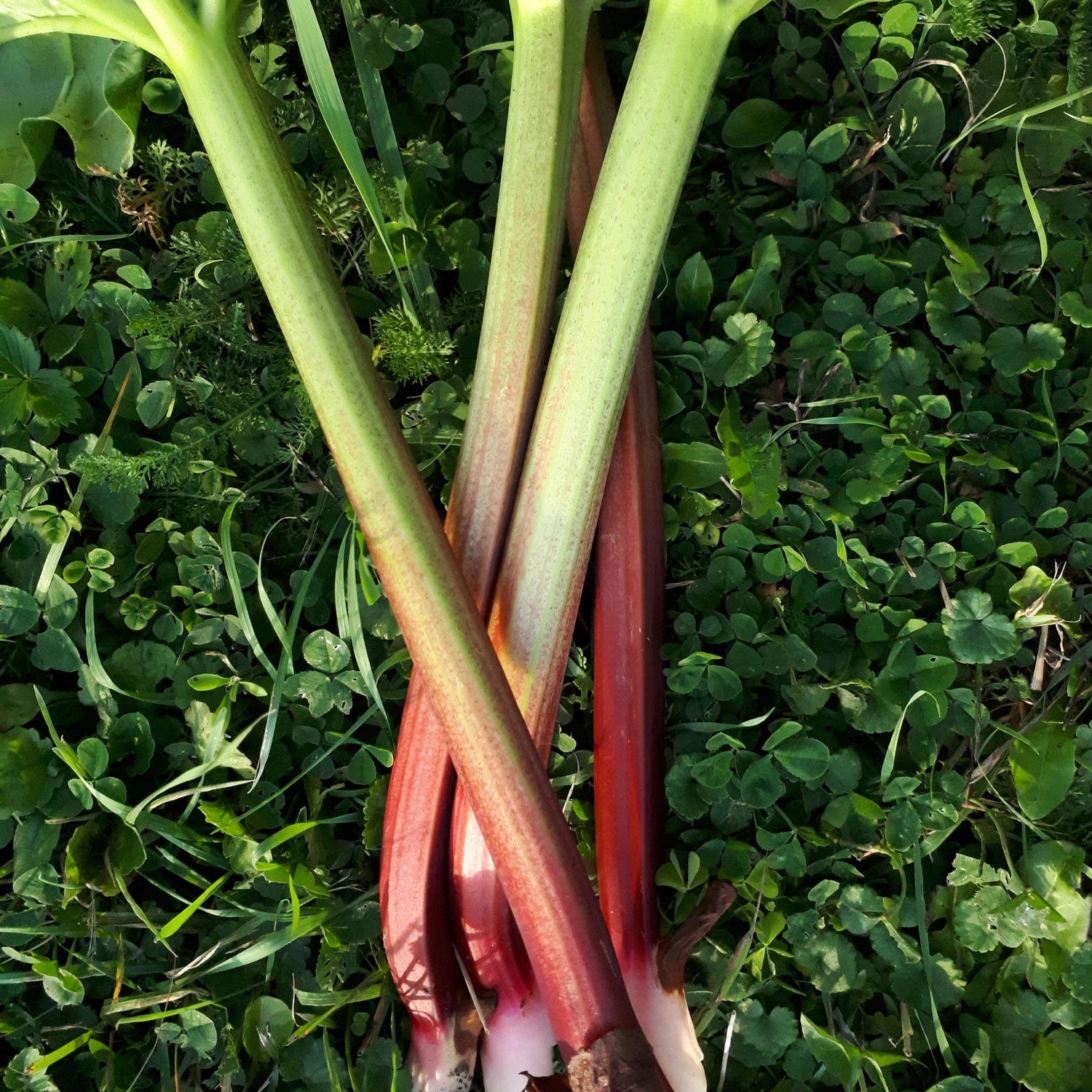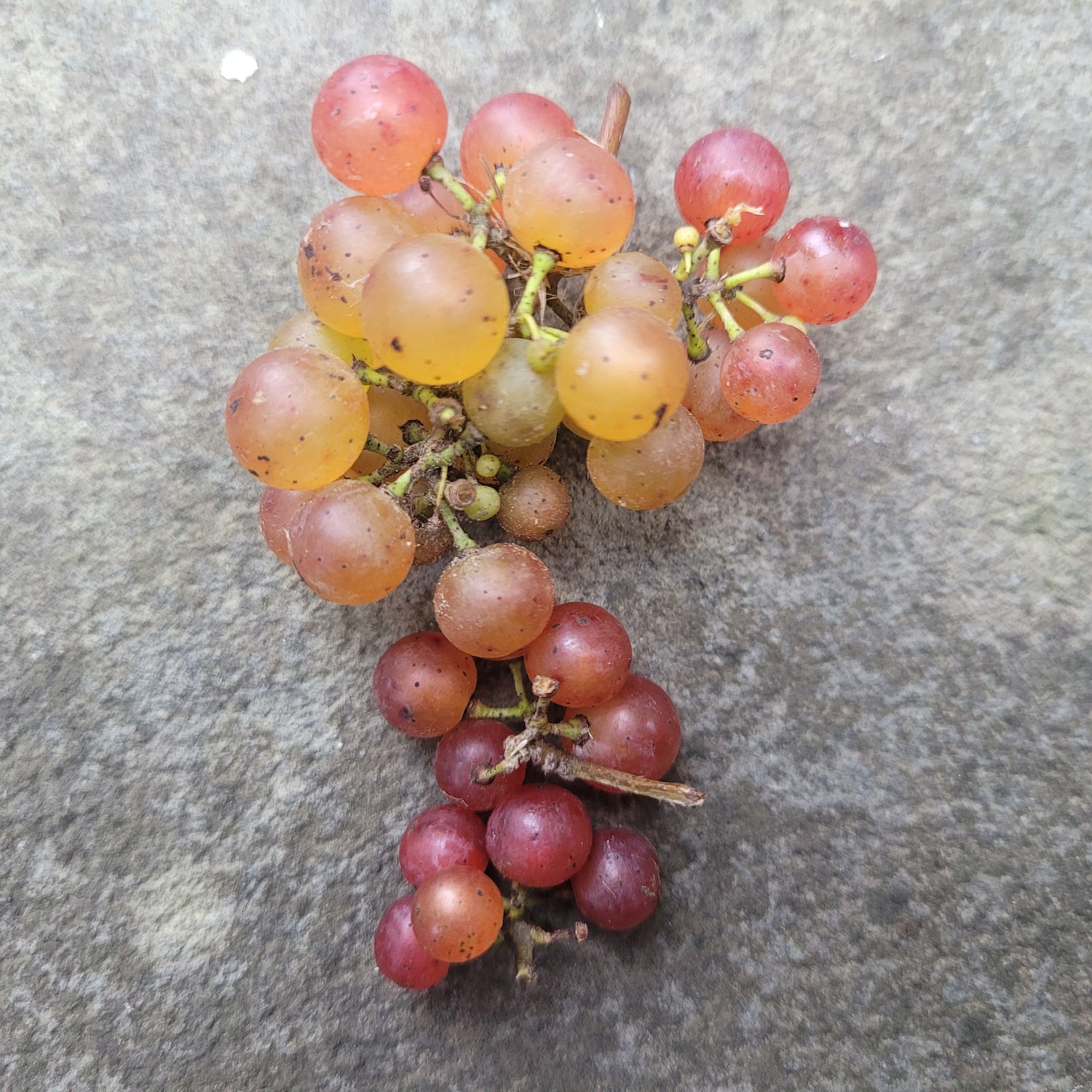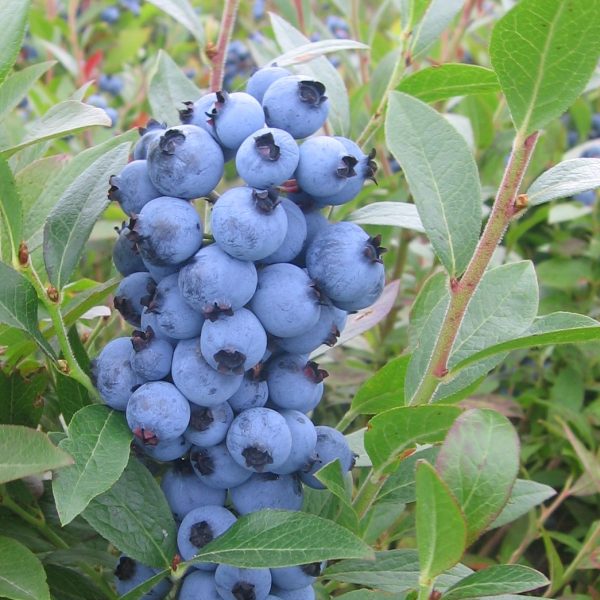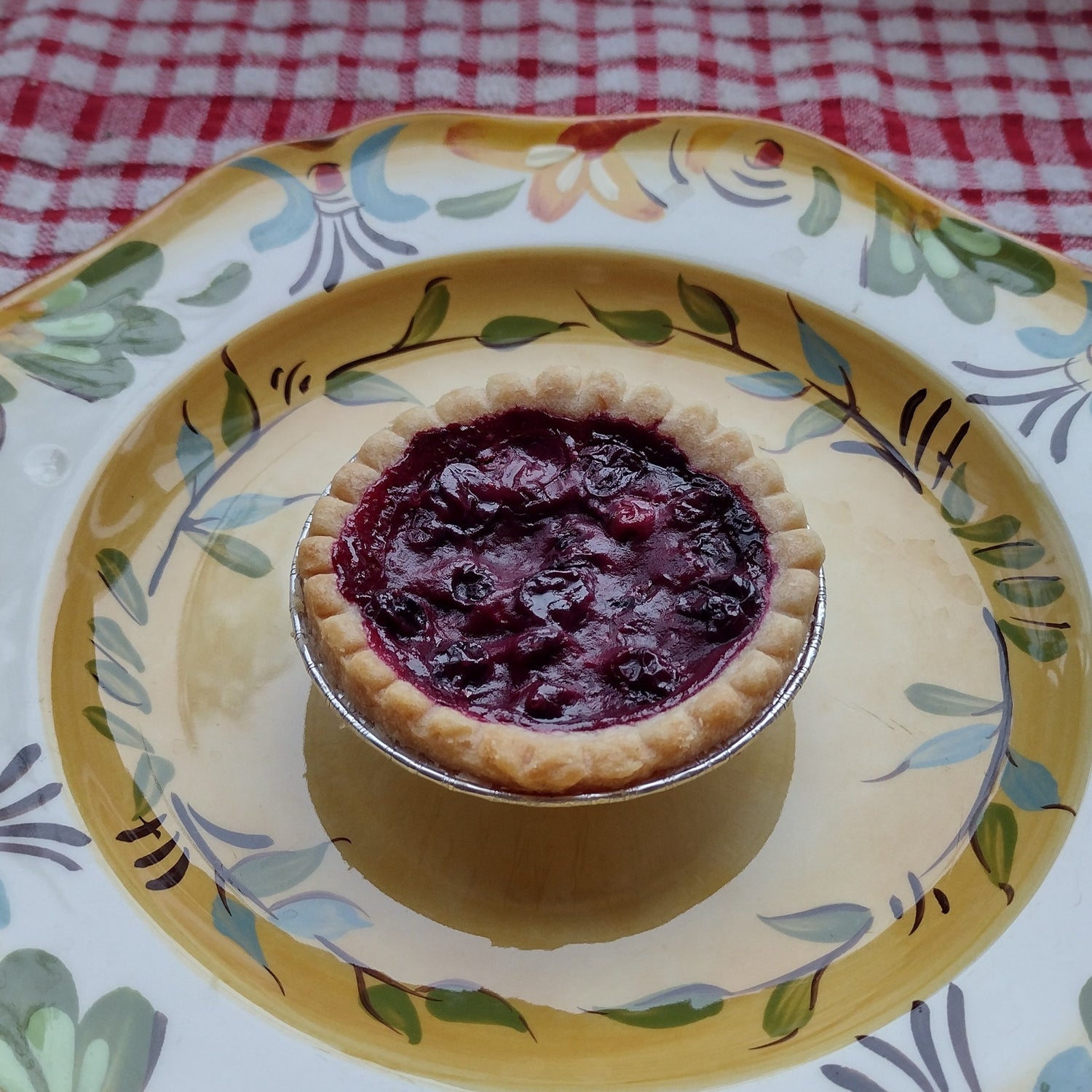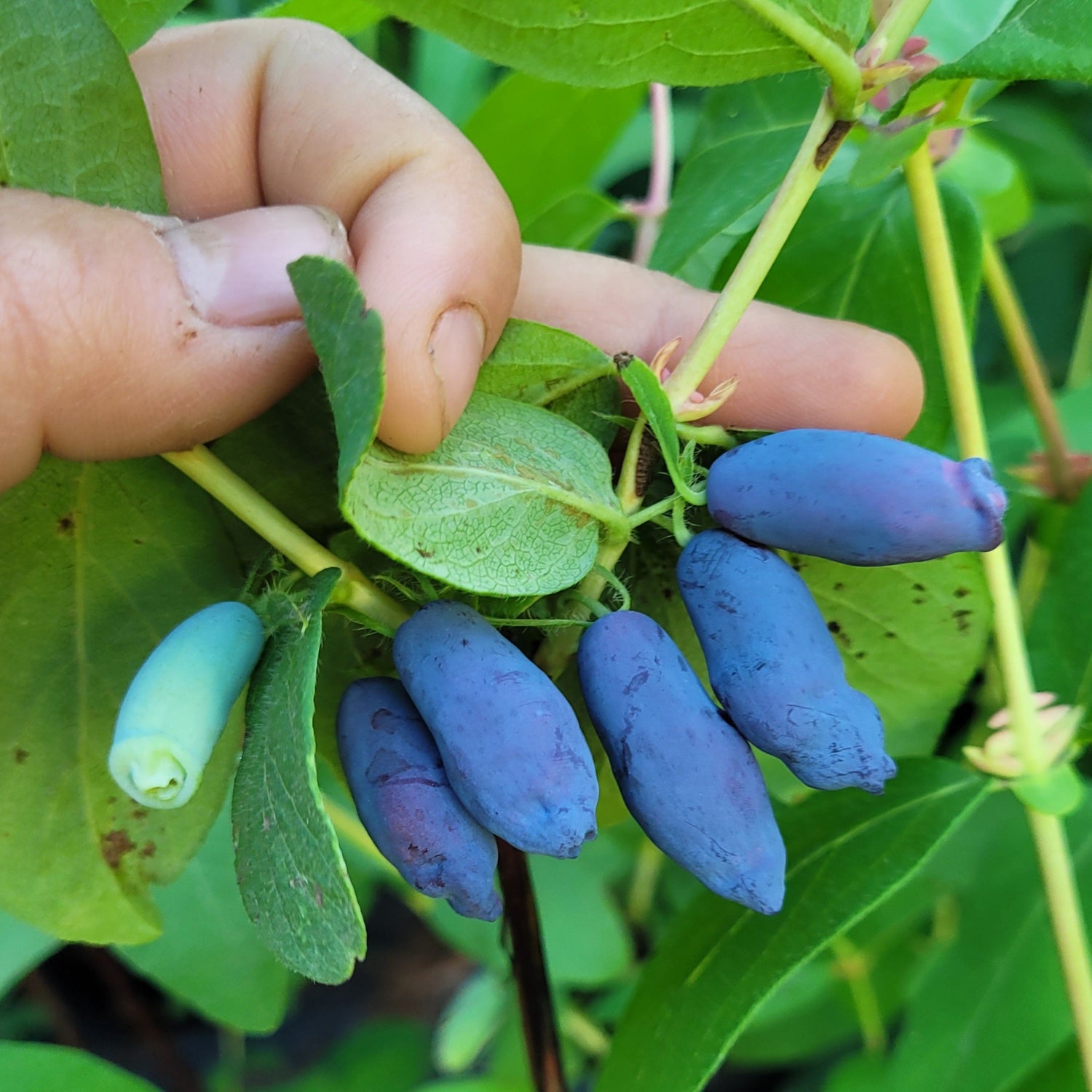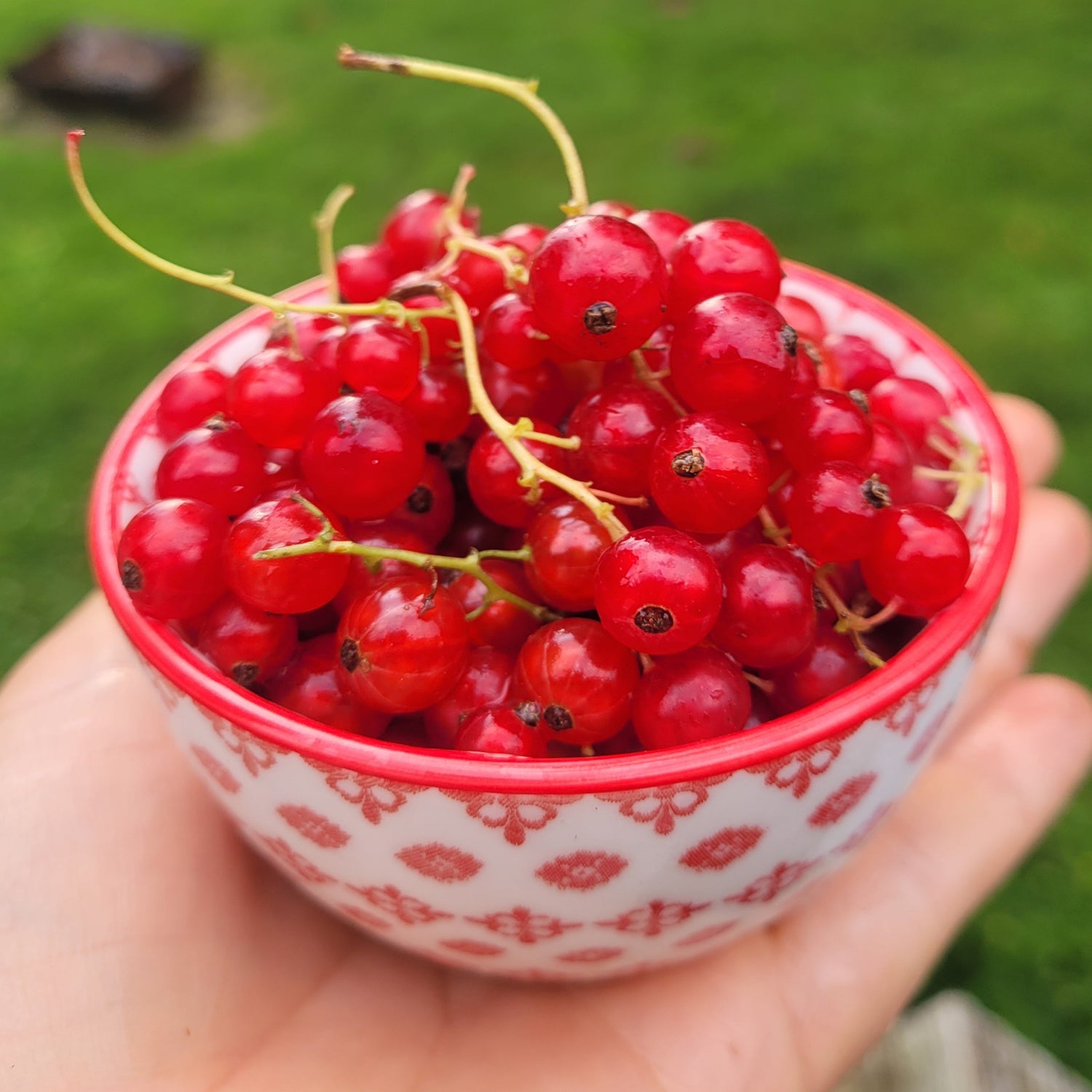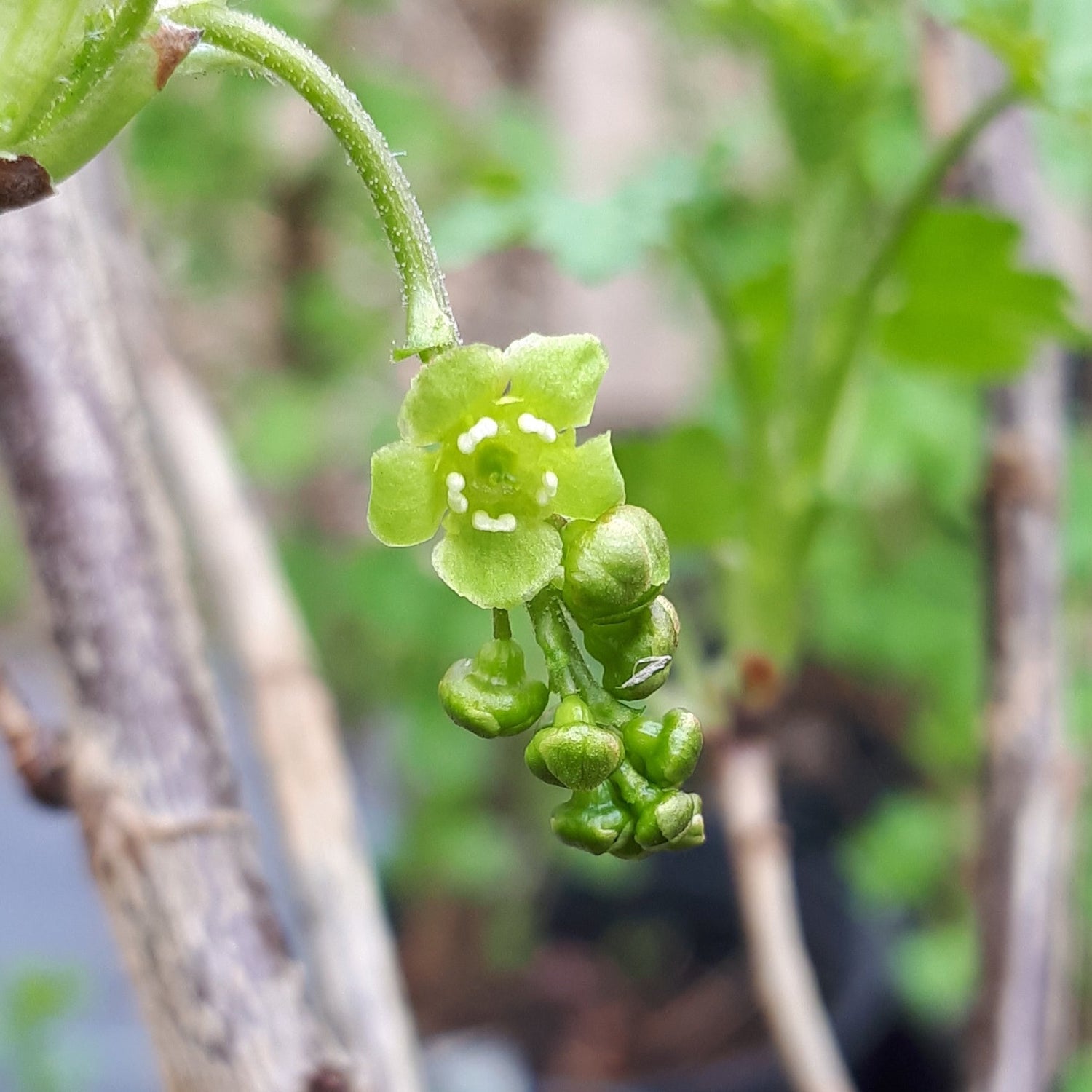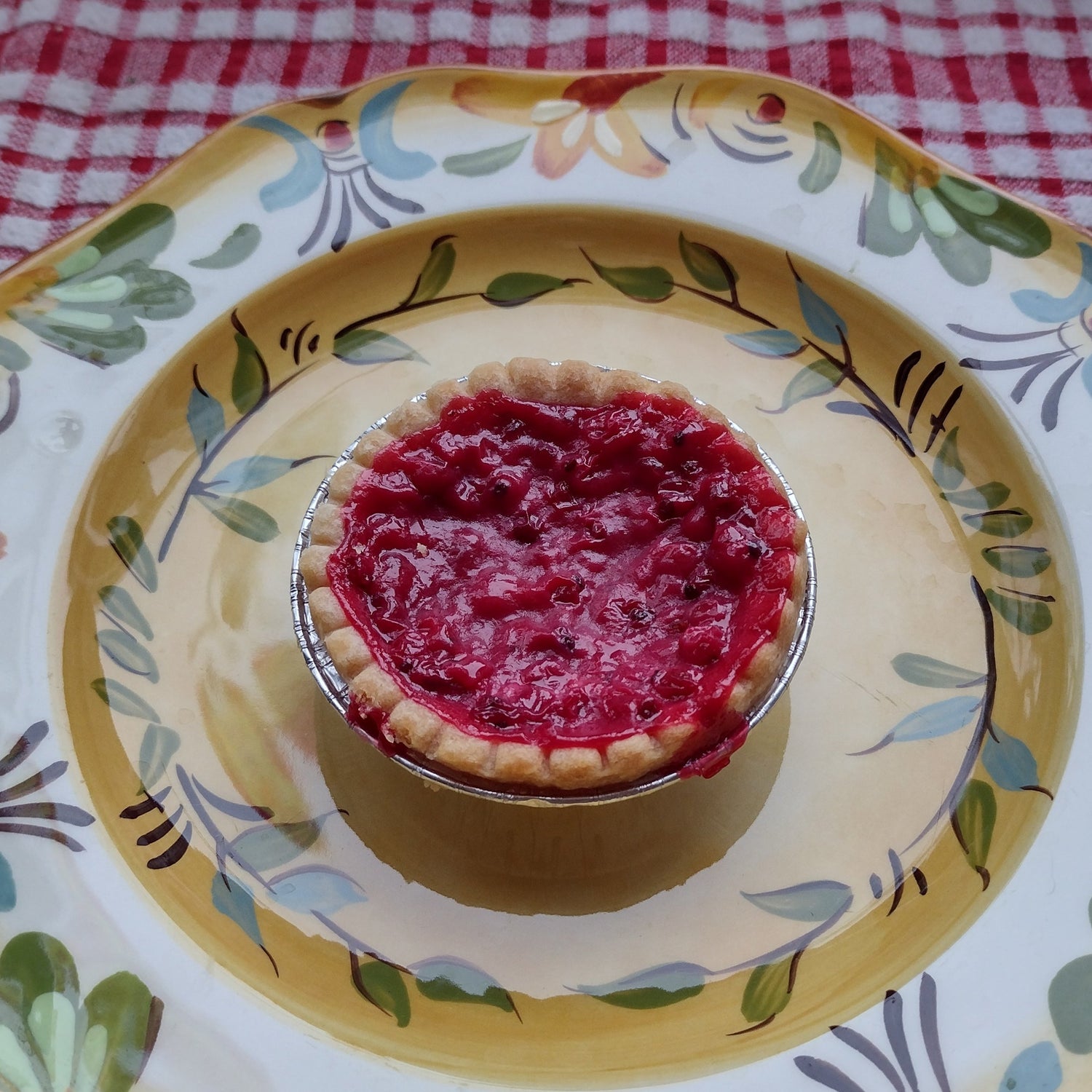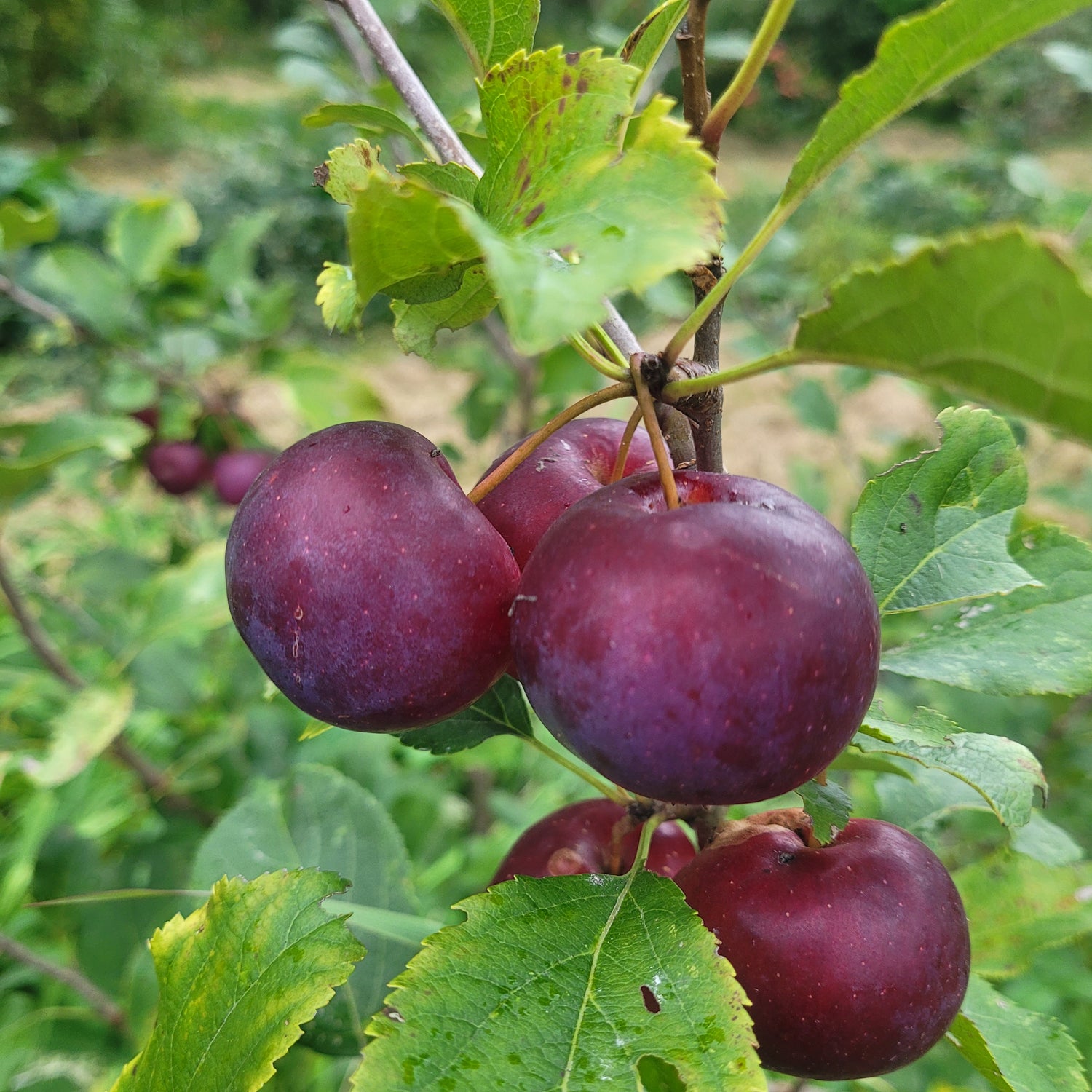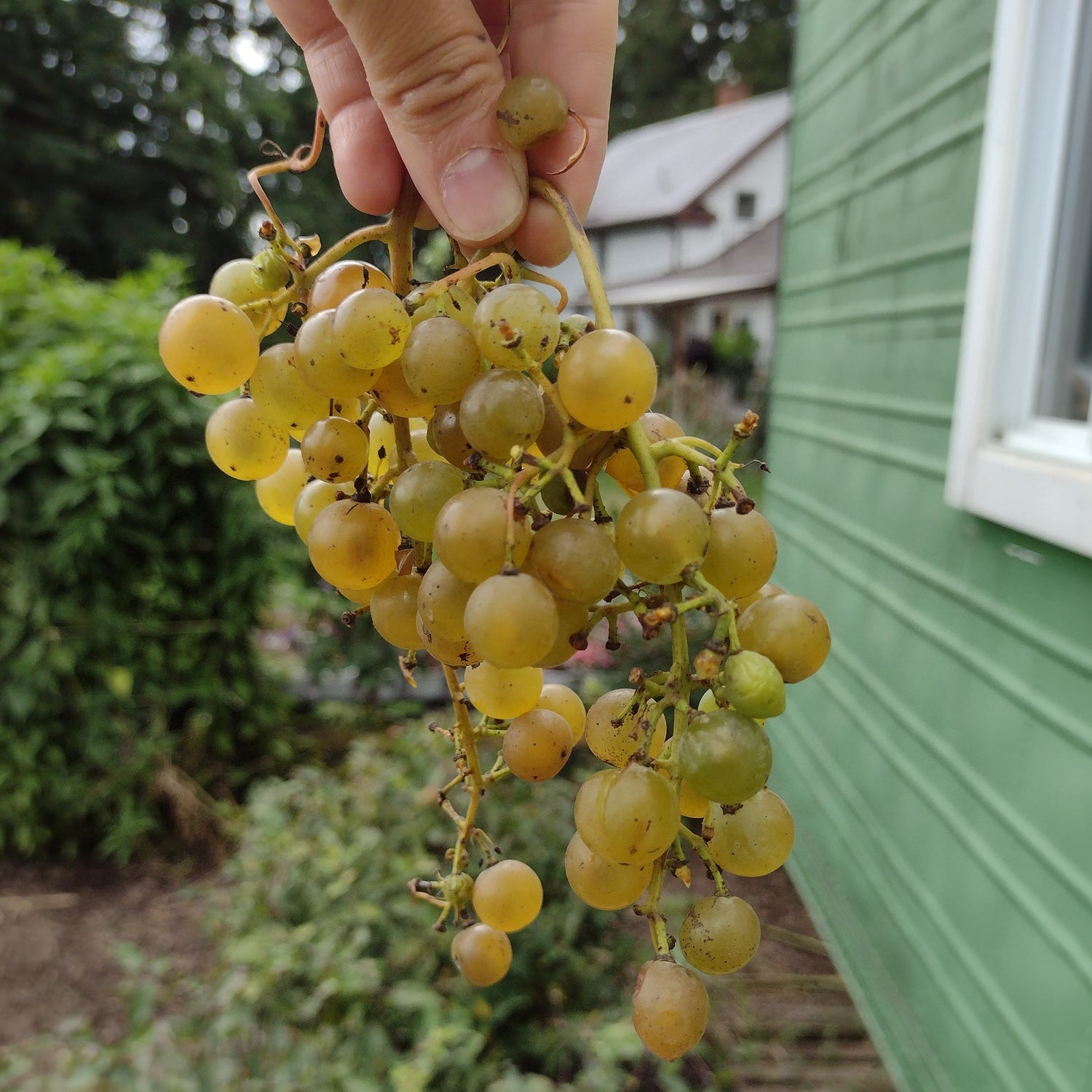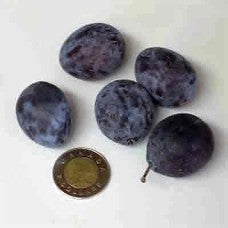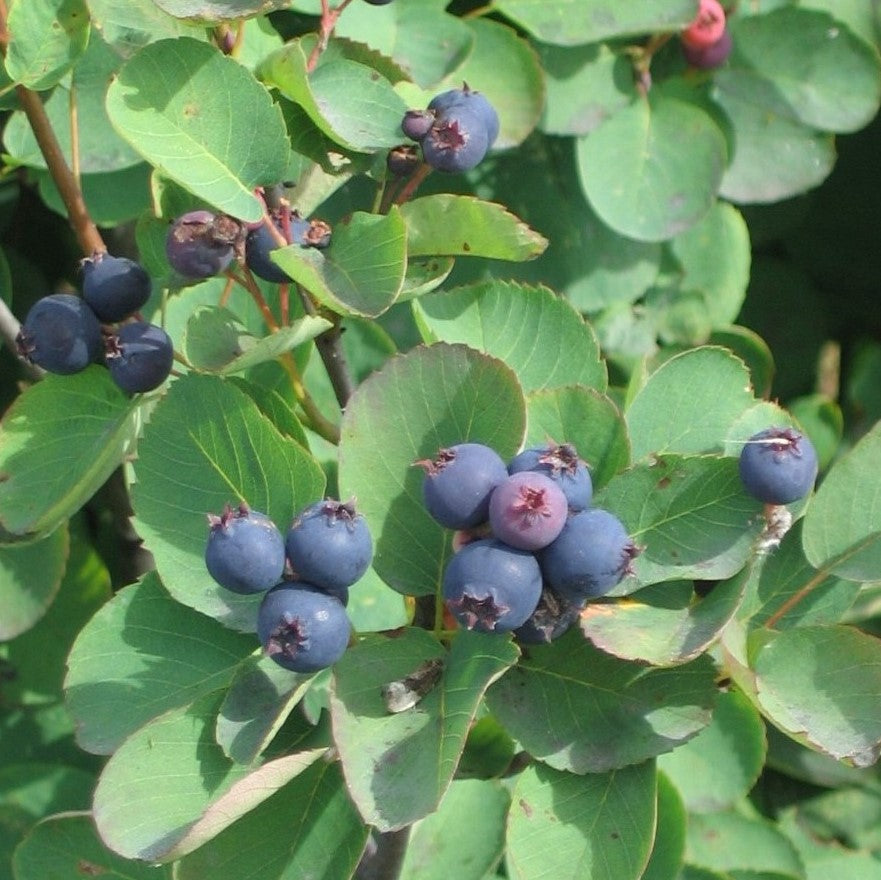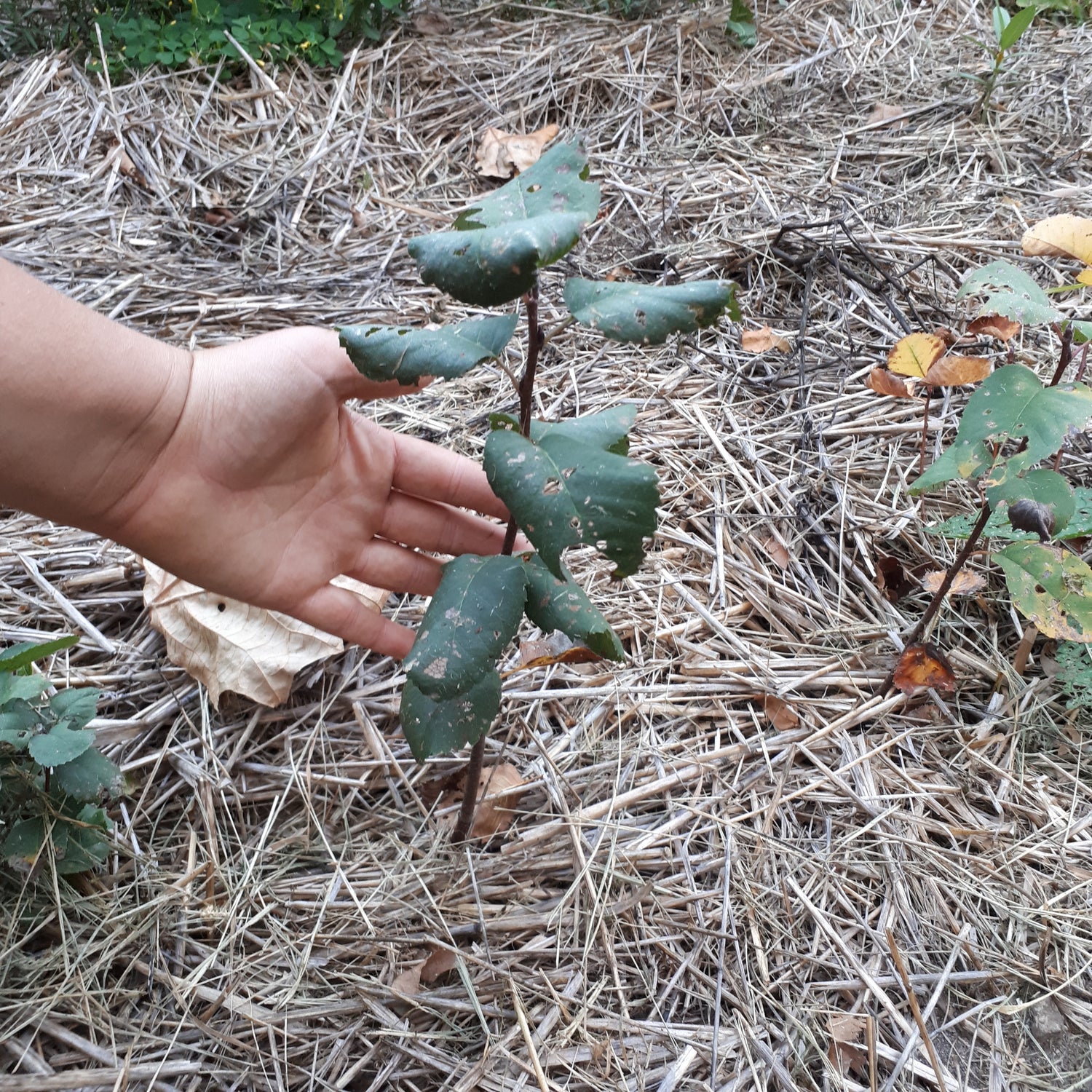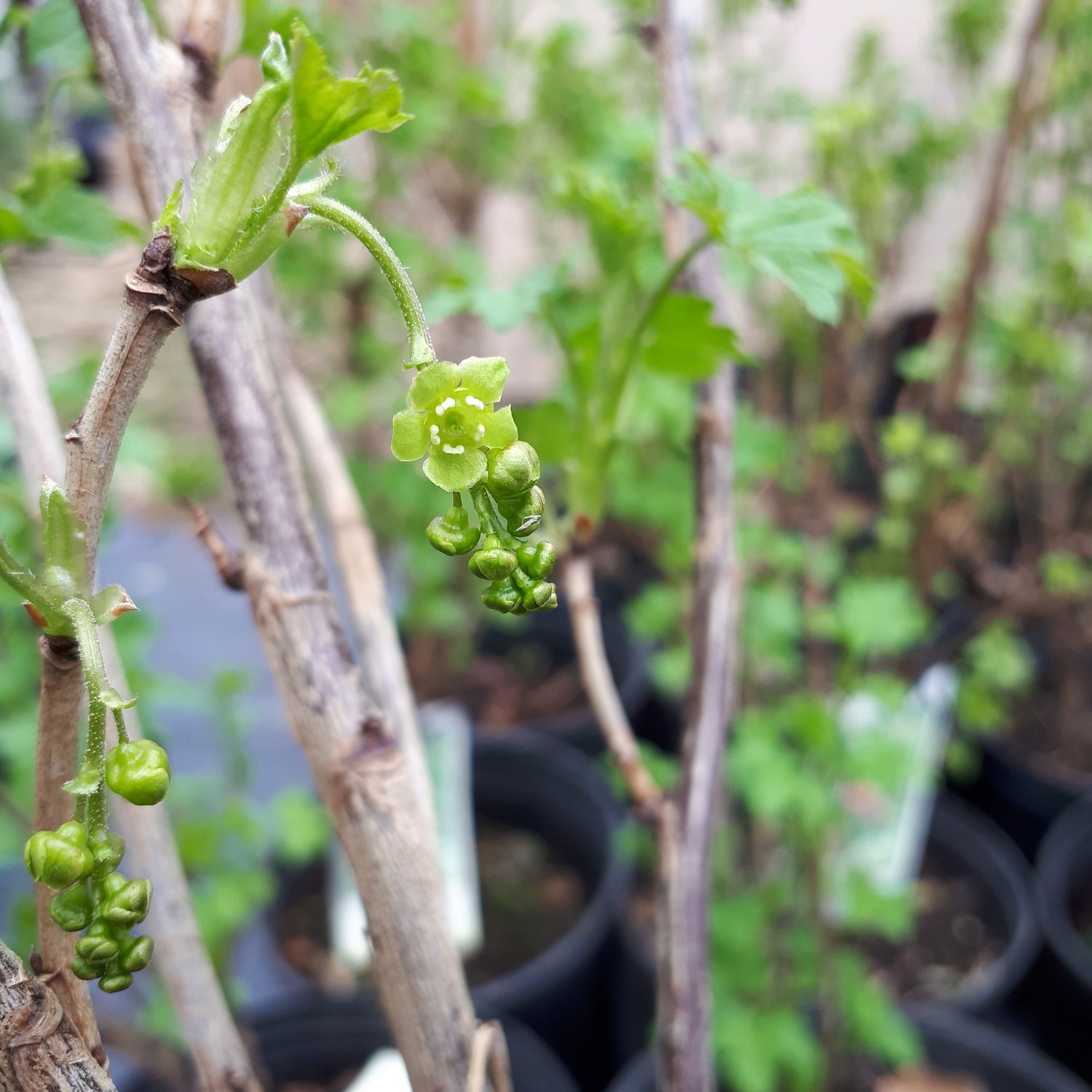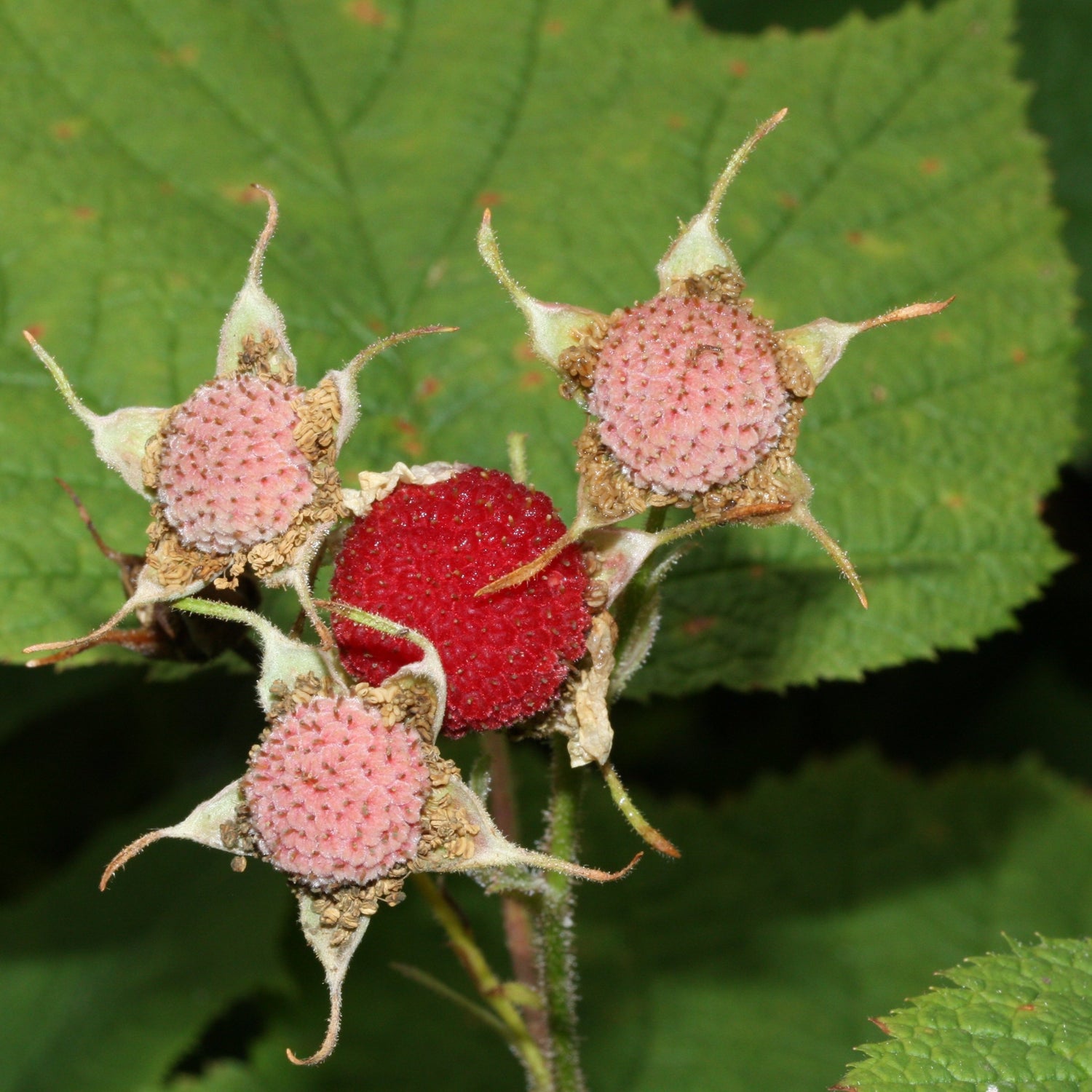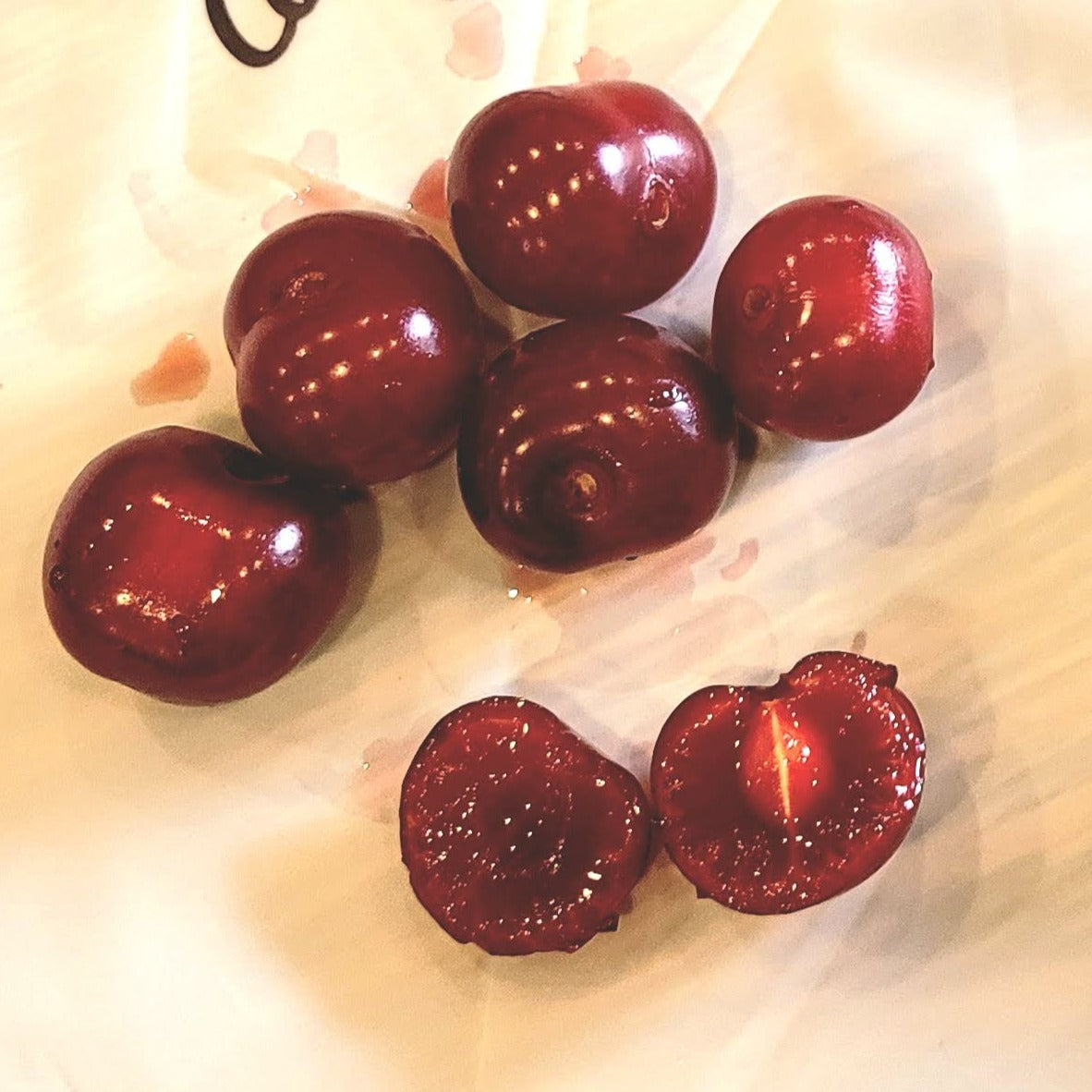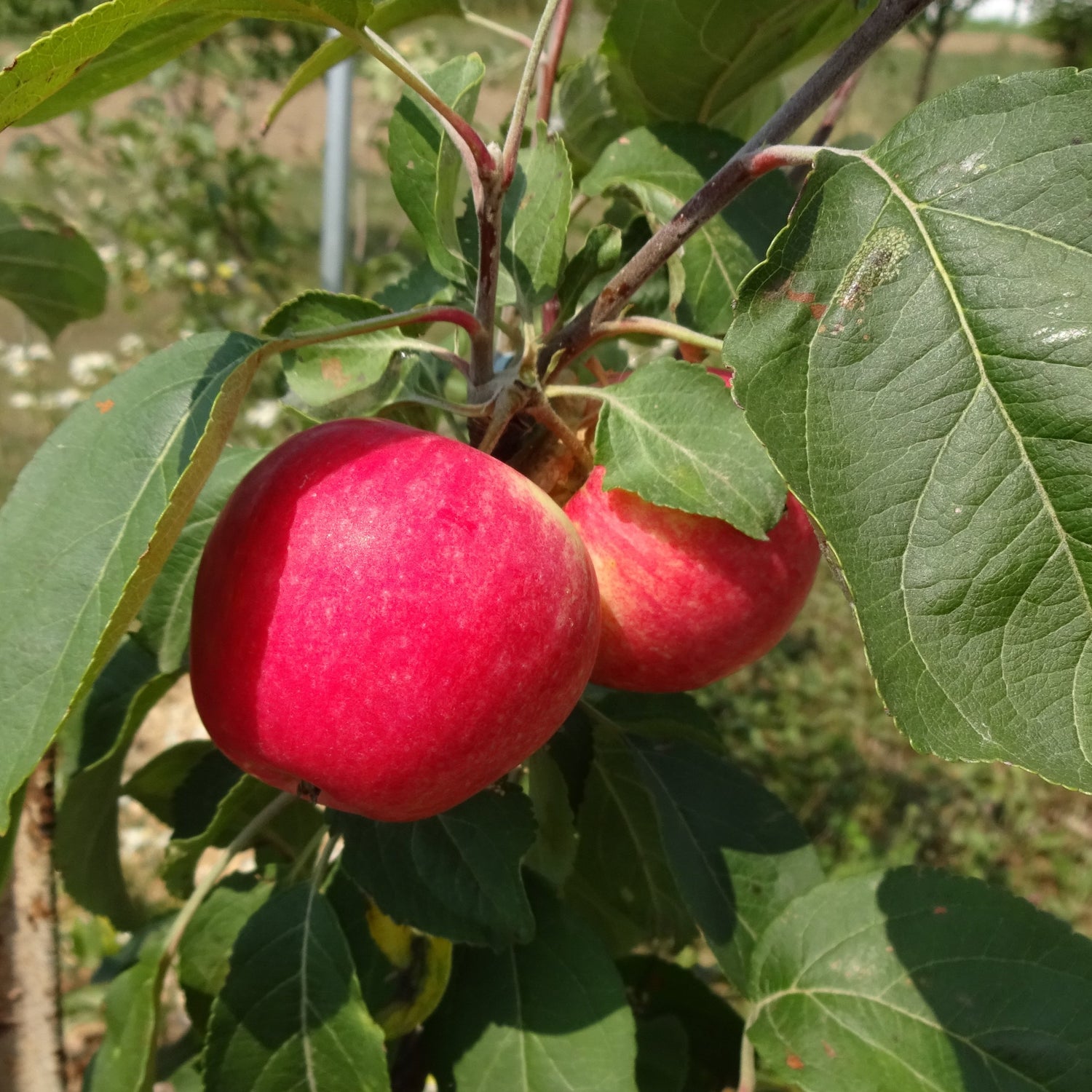All Zone 4 (or hardier) Plants
Sort by:
232 products
232 products
History: Little is known about Muscadet de Dieppe aside from the fact it originated near the port of Dieppe in Normandy, France. It was commonly grown in the area since 1750 at least.
Why We Grow It: Considering this French cider variety was popular in an area known for its cider, this makes for a classic cider apple. The juice is bittersweet and aromatic which is excellent in both single-variety ciders and cider blends.
History: John McIntosh planted several apple seedlings upon settling in Dundela, Ontario. From these, he discovered the famous McIntosh apple as a seedling in his orchard. The family began selling the fruit and grafted McIntosh trees in 1835 and in 1870 it entered commercial production. By the 1900s it was one of the most popular apples in northeastern North America, although its popularity waned over time as varieties such as Gala were introduced. Nonetheless, McIntosh apples still remain some of the most popular in North America. The original tree died in 1906 after being damaged by a house fire and a commemorative plaque marks where it stood. The apple has since been named Canada's national fruit. The Macintosh line of Apple computers was also named after this variety.
Why We Grow It: For fans of Canadian heritage apples in particular, this one is hard to beat. To the best of our knowledge, this is the original strain of McIntosh. Aside from its storied past, McIntosh apples boast soft, slightly tart flesh with high Vitamin C content. It is excellent for fresh eating and making applesauce.
Species: Amelanchier alnifolia (aka Western Serviceberry)
History: Martin was grown by Dieter Martin in Saskatchewan. He selected this variety for its large berries and uniform ripening time.
Why We Grow It: Martin produces deep purple berries that are both flavourful and juicy! The berries are on the larger size and ripen at more or less the same time, making them a good choice for mechanized picking.
History: Red Gravenstein is a sport/mutation of the original Gravenstein/Yellow Gravenstein that is a striking bright red. Some say it is also sweeter than the original.
Why We Grow It: With attractive red skin, this is a lovely sport of the original Gravenstein. It is a good quality and sweet early apple that is excellent for home orchards.
History: Conference pears were found growing in the nursery of Thomas Francis River in the UK in 1884. The following year, he introduced the variety at the National British Pear Conference in London where it won fist place, solidifying its reputation and earning its name. Conference pears continue to be grown in several European countries today where it remains very popular.
Why We Grow It: This old variety has remained popular due to its pleasant and sweet flavour. It can be eaten right off the tree and will keep for a couple months. The fruit itself has an elongated neck, giving it a rather odd appearance.
Species: Lonicera caerulea
History: Little is known about the origins of Honey Gin aside from the fact it originated in Russia.
Why We Grow It: This variety boasts a unique sweet flavour with hints of smoked plum. Honey Gin's berries are 2cm long and deep blue and juicy. They can be used in a wide variety of ways such as fresh eating or cooking but are generally noted for their excellence in wine, gin, and vodka production.
2025 Staff Favourite
Grandma Barbara-Anne Rhubarb is Steph's favourite this year! In her experience, “it makes a really pretty pink juice when cooked down. She used it to create a salad dressing that was lovely both in colour and flavour!”
All Staff Favourites are 20% off. The Staff Favourite Discount cannot be combined with other quantity discounts.
Species: Rheum sp
History: Zack's grandma Barbara-Anne grew this variety on her homestead near Poplar Hill. It has been enjoyed throughout the generations in a multitude of crisps, jams, tarts, sauces, and pies (see one of Mouse's pies in the pictures!).
Why We Grow It: Rhubarb is nutritious, incredibly easy to grow, and sports a showy bloom appreciated by both pollinators and humans. This perennial vegetable creates a lush, delicious ground cover and can be used to make a variety of delicious dishes.
A note on the "Grandma" Series: Inspired by Ken's 'Grandma Ethel Black currant', we decided to curate our own repertoire of family favourites grown by our grandmothers! Check out our tried-n-true gooseberries and raspberries in addition to the currants and rhubarb.
Species: Vitis labrusca x Vitis riparia x Vitis vinifera, and small amounts of other species of different Vitis from North America
History: Bred by Elmer Swenson in Wisconsin, Somerset is one of numerous varieties he created for growing in our cooler North American climates. This cultivar has become increasingly popular in recent years and has good potential for commercial growing. The variety was released in 2002.
Why We Grow It: One of the hardiest, highest quality seedless grape varieties out there, this is an excellent table grape: sweet, spicy, with strong notes of strawberry. The grapes have beautiful pink flushed skin and are most decadent if allowed to sit on a sunny window sill for a week or so after harvest. Although the fruit is on the smaller to medium end of the scale, the vines produce large, heavy clusters that more than compensate for the size of the individual grapes. The grapes have a firm texture with some crunch.
Species: Vaccinium angustifolium
History: Top Hat lowbush blueberry was released by the Michigan State University Agricultural Experiment Station some time before the mid to late 1970s.
Why We Grow It: This variety produces small berries with a rich sweet-tart flavour. It is a popular pick for bonsai and container gardening. Blueberries are great for baking, for example Steph made some wonderful black currant and blueberry tarts that are pictured here!
History: Shamrock apples were raised by K. Lapins at the Pacific Agri-Food Research Centre in 1970 and released in 1986.
Why We Grow It: This is a Canadian apple for all you Granny Smith lovers! Although a bit sweeter than Granny Smith, Shamrock apples still have some tartness and are hardy enough to survive in Canadian climates. They even resemble Granny Smith with their light green skin and white flesh.
Photos courtesy of Shannon McInnis!
Species: Lonicera caerulea
History: Blue Banana was developed by Lidia Stuart of Berries Unlimited, potentially bred from Russian varieties or a cross between Russian and Japanese varieties. The variety is named for the unique shape of the berries and was likely selected for their large size and sweet flavour.
Why We Grow It: Blue Banana is exceptionally sweet compared to other haskap varieties and the flavour has been described as 'smoked strawberry.' These large, sweet berries are good for fresh eating along with cooking, baking, preserving, etc! The bush itself grows quickly and is relatively disease resistant.
Species: Ribes rubrum
History: These red currants come from the Becker family homestead near Wellesley, Ontario where we are located. This is a great way to try something truly local!
Why We Grow It: In our experience, Becker red currants are reliable and productive. The fruit produced by Becker red currants are larger than those produced by Red Lake and make a wonderful juice. They can also be used for cooking and baking, such as the tarts made by Steph that are pictured here!
History: Bulmer's Norman was imported from Normandy, France to England in the early 1900s by the cider making company H.P. Bulmer. This variety didn't even have a name when it arrived but quickly grew in popularity for use in making cider. This apple has since fallen out of the limelight and is primarily used for grafting other varieties onto its sturdy trunk.
Why We Grow It: Although less popular these days, this variety boasts vigorous growth, decent disease resistance, and a surprising tolerance for cold. This conical, green apple produces a bittersweet juice and is high in tannins.
Species: Hybrid of Rubus idaeobatus and Rubus occidentalis
History: Royalty was bred at the Geneva Experiment Station in Geneva, New York as a cross between red and black raspberries. It was released in 1982 and is the most popular purple raspberry variety on the market for both its productivity and sweetness.
Why We Grow It: Royalty is an excellent summer-bearing variety, producing ample crops of large (some get an inch long!), purple berries that are very sweet. Purple raspberries are a unique hybrid which can be picked while a little unripe and still red for a classic raspberry flavour or when fully ripe and purple for a sweeter taste more akin to black raspberries. Steph is impressed with the quality, flavour, and long harvest window of this variety.
History: The St. Lawrence apple was discovered in the Montreal area as a seedling of a Snow apple, the most popular variety in Quebec at the time. By 1835, these apples were commonly grown in the area where they were popular for fresh eating and cooking but have since faded into obscurity.
Why We Grow It: Although less popular now, these apples are still good for eating and baking. The boldly striped red skin also makes the fruit very attractive. The tree bears good crops each year and is relatively hardy.
Species: Gleditsia triacanthos
History: Honey Locust is native to the central United States where it has been used by indigenous peoples as a source of food and medicine. Its name is derived from the pulp inside the pea pods which is quite sweet and crisp. It has been commonly planted as a landscape tree in many places around the world due to its ability to survive many conditions too harsh for other trees. Unfortunately, Honey Locust's tenacious nature has caused it to become invasive in some places.
Why We Grow It: Reaching 30 meters tall, this native nitrogen fixing tree benefits many including bees, wildlife, and even humans: we can use the sweet (honey flavoured) pulp inside their pods in baking, tea or for brewing beer. Honey Locusts grow impressive thorns, 3-10 cm long which can be used for pins or nails in a pinch and the durable, rot-resistant wood has a variety of uses.
History: The exact origins of Hyslop are unclear but it was discovered sometime in the early 1800s around Boston by the Hyslop family who helped develop the area. This apple was popular for over a century but in recent years has fallen into obscurity.
Why We Grow It: Although definitely not recommended for fresh eating, Hyslop crabapples have a sub-acid, astringent flavour and are great in cider blends. They are also known as being one of the best apples for jellies. The tree is quite attractive with blue tinged blossoms in the spring and brilliant red/purple fruit in the fall.
Species: Hippophae rhamnoides
History: Pollmix sea buckthorn was developed as a series of clones to aid in the pollination of female sea buckthorn plants. It is a German cultivar.
Why We Grow It: Although Pollmix does not produce berries, it is a good option for pollinating female varieties! Aside from that, the attractive silvery green leaves can make this shrub an appealing plant to have in the yard, and it is also good for erosion control or creating windbreaks.
Species: Vitis vinifera x V. rupestris x V. ripraria x V. labrusca
History: Osceola Muscat/ES.8-2-43 was bred by renowned grape breeder Elmer Swenson as part of his effort to mix French and North American grapes to create high-quality varieties that grow well in cooler climates. Osceola Muscat is a cross between four different species: Common grape (Vitis vinifera), Vitis rupestris, Riverbank grape (Vitis riparia) and Fox grape (Vitis labrusca). Swenson bred it on his farm near Osceola, Wisconsin and in 2010 the variety was named after the town. The grape's alternate name, Muscat de Swenson, is named after Swenson himself who passed away in 2004.
Why We Grow It: Osceola Muscat produces loose clusters of seeded, intensely aromatic grapes with notes of peach and apricot. The small-medium, thin skinned fruit is suitable for fresh eating or juice and wine. This is one of the hardiest 'muscat' varieties available and is relatively vigorous.
History: German plums are a European variety characteristic of the kind grown in central Europe. Although not much is known about its history, it is believed this variety is at least a couple centuries old.
Why We Grow It: A juicy, freestone plum with an aromatic, sweet flavour. They are great for fresh eating and due to their drier than average nature, are great for baking into traditional German plum desserts. They keep for 2-4 weeks refrigerated, providing ample time to enjoy them fresh or find that perfect recipe.
The photo of the plums in hand compares 4 larger Italian plums on the upper right, to 2 smaller German plums on the lower left.
Species: Amelanchier alnifolia (aka Western Serviceberry)
History: Smokey (sometimes spelled Smoky) likely originated in Alberta. This productive variety was once the main cultivar grown in Canada commercially.
Why We Grow It: Smokey saskatoon berries are optimal for the fresh eating market with a mild sweet flavour. These berries are a great substitute for blueberries. Smokey is one of the best yielding varieties, and grows up to 12 feet tall. Saskatoons by nature are slow growing, and while they will bear fruit in 1-3 years, it can take up to 15 years for a full crop.
Photo by Cindy Malette from Burst
Species: Ribes nigrum
History: This black currant is a family classic that was grown by Ken's great-grandmother.
Why We Grow It: Grandma Ethel produces large fruit with a slightly stronger flavour than Titania and an unusual sweetness for a currant. The berries make a very tasty juice - the recipe can be found further below!
A note on the "Grandma" Series: Inspired by this modest currants' success here at the nursery, we decided to curate our own repertoire of family favourites! Check out our tried-n-true gooseberries, rhubarb and raspberries.
Species: Rubus parviflorus
History: Thimbleberries are a native plant closely related to raspberries and blackberries. Cultivated for edible, ornamental, and ecological reasons today, they have also historically been used by indigenous peoples as a source of food and medicine.
Why We Grow It: This is an excellent under-story plant that produces smaller, flatter berries than cultivated raspberries, but with a delicious sweet-tart flavour. Apparently young shoots can be harvested in spring, lightly peeled, and then boiled for an asparagus-like 'vegetable'- we haven't tried this yet, but would love to hear from you if you have! The thornless bush grows up to 7 feet tall, though can be kept smaller with pruning/trellising/tying down. The fruit grows best on 2-3 year old canes unlike raspberries, which makes this an ideal plant for living fences.
History: Carmine Jewel is one of several dwarf sour cherry shrubs developed at the University of Saskatchewan in an effort to combine cold hardiness, dwarf stature, and good quality fruit into one variety. This effort was started by Dr. Kerr (for whom Kerr applecrabs were named) in the 1940s and Carmine Jewel was released in 1999. It is considered the hardiest of the cherries they developed. Carmine Jewel cherries are now the most commonly grown commercial cherries in the prairies.
Why We Grow It: Carmine Jewel is a notably productive cultivar with small cherries that have a high flesh-to-pit ratio. Thanks to their firm flesh, they are a preferred variety for freezing and drying. The shrub is on the smaller size, reaching 6-7ft once mature, great for anyone who loves cherries but doesn't have a lot of space!
Species: Catalpa speciosa
History: Northern Catalpa is native to the midwestern US where it was cultivated starting in the 1750s due to its resistance to rotting. This made it useful as fence posts and, rather unsuccessfully, as railroad ties. This tree has since expanded far beyond its original range as a commonly planted ornamental tree.
Why We Grow It: Catalpas make lovely ornamental trees, featuring large, heart-shaped leaves and twisting trunks. To further the visual appeal, they bloom annually with large, white flowers which turn into dangling bean pods.
History: Idared apples were developed at the University of Idaho Agricultural Experiment Station in 1942. Although its flavour is generally considered average, its excellent storage qualities have made it one of the most popular apple varieties in North America.
Why We Grow It: Idared's best quality is its ability to easily last six months when stored in a fridge, potentially until June under optimal storage conditions. The flesh tends to be softer and is white with some tinges of green. The flavour is described as sprightly, moderately acidic, and tangy, and this apple boasts a high Vitamin C content. It is great for baking and making applesauce. The tree's naturally somewhat smaller size makes Idared easier to prune and train.
Species: Gymnocladus dioicus
History: Kentucky Coffeetrees are native to the southernmost parts of Ontario and the midwestern United States. Despite its fairly large range, it is relatively rare today likely due to evolutionary anachronism. It is believed Kentucky Coffeetrees co-evolved with megafauna that are now extinct, so previously beneficial traits like the thick leathery pod around its seeds now hinder seed dispersal. Indigenous peoples have used the tree as a source of food by roasting the seeds and making a coffee-like drink, and the seeds have also been used as pieces in games and to make jewellery. Nowadays, the tree is planted ornamentally in urban areas.
Why We Grow It: This nitrogen-fixing, Carolinian tree produces seeds that may be roasted and used as a coffee substitute, but be aware the raw seeds are toxic! This tree boasts the largest leaves of any native tree, and it's considered a threatened species.
History: A highly regarded cider apple of Normandy, France, where it has been grown for centuries. This cultivar is one of the traditional cultivars in the production of calvados (a brandy made from apples and sometimes pears) in the Pays d’Auge region.
Why we grow it: This cider apple has a unique spicy flavour that is high in tannins, low in acidity, and low in sugar. With it's rich history and beautiful brass coloured juice, this cultivar is a must in every well-rounded cider orchard.
History: Norland apples were created by Dr. C.R. Ure and introduced in 1979 by the Agriculture Canada Research Station in Morden, Manitoba.
Why We Grow It: Since this variety was bred to survive in the prairies, it is very cold hardy. The fruit is medium-sized with sweet flesh that is good for fresh eating or applesauce. It bears heavy annual crops starting early in the life of the tree. A home orchardist in Dacre, ON described the fruit as "lovely with no pest damage; juicy, creamy-fleshed with excellent flavour."
Species: Ribes uva-crispa x Ribes missouriense
History: Pixwell was developed at the North Dakota Experiment Station in a gooseberry breeding program that began in 1920. A cross between Oregon Champion and Ribes missouriense, the variety was eventually released in 1932. Pixwell was named for it's less thorny nature - as in smaller and less thorns than most gooseberries, especially as it grows older - which makes it easier to pick the berries.
Why We Grow It: Aside from living up to its name, Pixwell produces green berries that turn a lovely shade of pink to deep plummy-purple-red once they are fully ripe - though you can use the green berries for tangy chutneys and the pink stage is nice fresh too. The medium berries have sweet flesh and tart skin, and are great for fresh eating, pies, and preserving.







